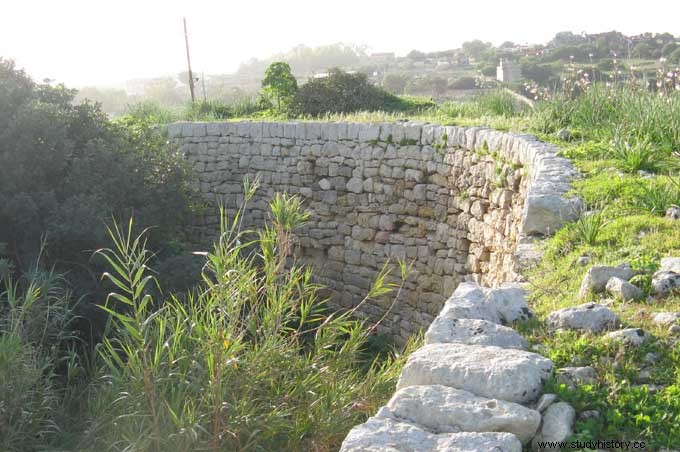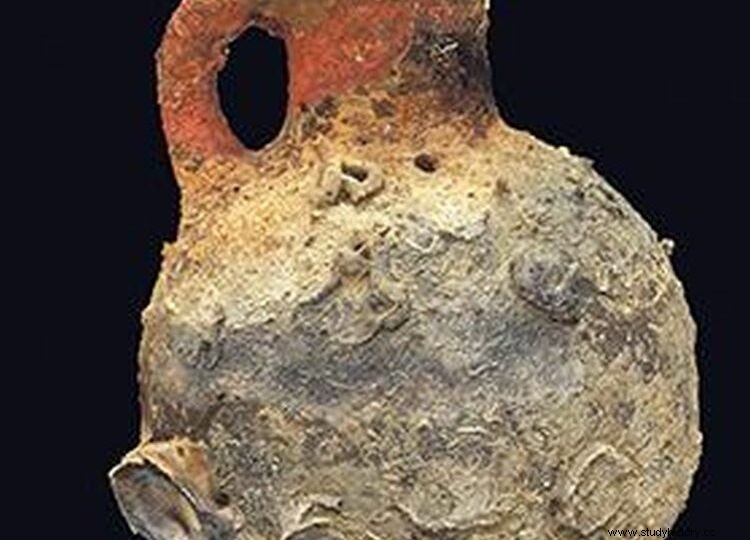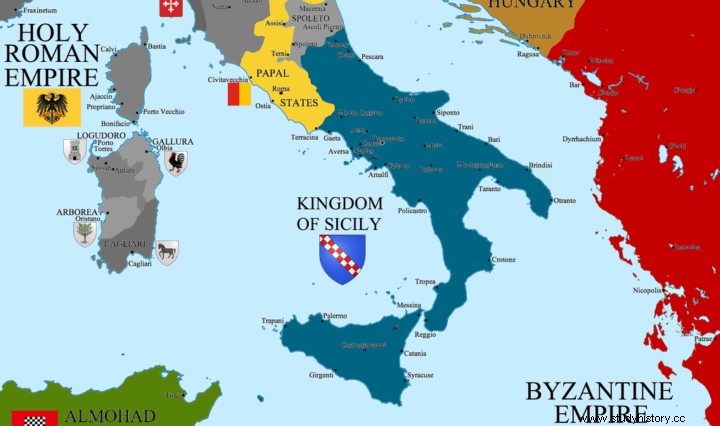Malta, an underrated Mediterranean island, is bursting with historical heritage and ancient art. More than 7,000 years of history define the colorful blend of Civilization that meant such a strong influence. Phoenicians, Carthaginians, Romans, Arabs and Sicilians built the tracks where Malta rose as the silent hidden gem.
British rule developed into Malta's independence in 1964. Today, Malta has been a member of the EU since 2004. The Maltese spirit was located between Europe and Africa and was deeply colored by the mixture of language, music and ancient fortifications.
The old days
The Neolithic period in Malta represents the golden age full of architectural wonders. The fertility goddess deserved her dedicated temples where the temple spirit is captured in time.
When the Sicilians began to move to Malta, they gathered in the village of Zebbiegh. Zebbiegh is a small village in Mgarr where the wonderful temples are located. The exact site of the temple is Scorba, a UNESCO World Heritage Site.
Around 50 stone temples are found on the island of Malta and Gozo. The design basically follows the same principle. It consists of the central corridor and two or more chambers in the shape of an ellipse. Clay, brushwood or beams were used instead of stone roofs.
It is believed that people came to Malta even before the Neolithic. Malta was once linked to Sicily by the massive land bridge that was almost united to its existence. Malta's mountain peaks developed the sacred atmosphere of temple building.
The land bridge was drowned by high water and melting ice. The islands of Malta, Gozo and Comino slowly created their own existence.
The Neolithic period follows the Bronze Age around 2500 BC. The mystery of the temple is strong in relation to how the stoneware was transferred, including ceramics. The massive statues in the Maltese temples remain another dubious purpose. Shaped like ladies without breasts decorated with stunning pleated skirts can not describe the true intention of the statues.

The temples of Ggantija in Gozo are dated as the oldest, to be precise around 3600 to 3200 BC. Their massive appearance believed that the giants were constructing them. Even the name itself-Ggantija-in Maltese means giant. Limestone blocks connect the main corridors with indoors.
Hal Salfieni Hypogeum Temple in Paula is a unique, underground temple consisting of chambers and passages made of the majestic stone. Archaeological treasures at the site include pottery, personal ornaments, human bones and other similar finds. Three levels define the appearance of the temple while the deepest takes 10 m underground. The visit is regulated to a limited number of people.
Temples in Hagar Qim, Mnajdra and Tarxien create the atmosphere of Malta as the "holy land".
Hagar Qim offers charming views of the islet Filfla from the hilltop. Decorated columns and some fat ladies' statues signify the significance of the temple, now housed in the National Museum of Archeology.
The Mnajdra temples are located on the magnificent cliffs overlooking Filfla islets. Three temples along the complex express the most exquisite ancient buildings in Malta. The lower temple has astrological significance according to the position of the sun.
Tarxien temples take value as the largest of Malta's megalithic temples. Located in the village of Tarxien, this site is a UNESCO World Heritage Site. Prehistoric art covering the famous spirals makes it the highlight of the place. It is believed that temples served the animal sacrifice.
Every megalithic temple today is protected by tent covers that also give them spiritual preservation.
Bronze Age Malta
The Maltese islands experienced emptiness in the Bronze Age around 2500 BC. as they were uninhabited. The construction of temples replaced dolphins, the less megalithic structures and the culture of cremating the dead. It is doubtful what brought the end of the Temple period, whether it is environmental change or a cultural crisis.
The early Bronze Age is characterized by the ceramic construction, which leads to deep questions regarding technology.
The important role in the Bronze Age belongs to the Borg in-Nadur temples, as they were the first examples of a fortified domestic settlement. Borg in Nadur is located in the picturesque valley of St. George's Bay in Birzebbuga.

The temple site was an important treasure of discovery in view of the differences between the temple period and the Bronze Age. Another prehistoric site Ghar Dalam is only 500 meters away.
Incredibly picturesque silos find their place along the coast, 15 of them. In recent times, most of the silos were destroyed due to the road that was built.
After the Phoenicians conquered Malta, the site slowly became an abandoned site around 500 BC. The tiny remains can still be seen at this large archeological site.
Period of the Phoenicians
Around 700 BC. the Phoenicians took power on the island until the beginning of the Roman Republic in 218 BC. The Phoenicians were the people of present-day Lebanon along with Syria and Israel recognized as the recognized maritime people and traders. Byblos town was a powerful center of trade and culture. It is believed that they came to Malta from the deck town. Trade was the main style of making the cities of ancient Phoenicians. Traces of Phoenicians can still be seen in Malta.
The name Malta itself came from the Phoenicians meaning "port". The city of Carthage in Tunisia was the most significant force of the Phoenicians framed by independence.

The various ports on the Maltese islands were the most valuable purpose of the Phoenicians.
Archaeological finds from that time are quite low, but are mainly related to pottery. Phoenicians were seen as the people of wealth, so they left large amphorae and elegant wine cups. Elegant wooden furniture and bronze and silver jewelry were the main factors in creating wealth.
The mixture of Phoenician and Punic culture in Malta is quite clear. The Punic period in Malta is shown with the rise of Carthage which began around the year 480 BC. Two and a half centuries are marked as the rule for Carthaginians.
The National Museum of Archeology in Valletta is the golden testimony of the Phoenicians who express their astonishment at Egypt. The tower in the garden of the house of the Archbishop Zurrieq stands as the strange evidence of the Phoenician times.
The most important trace of Phoenicians in Malta is the way Malta was transferred to the literary world. Phoenician language in Malta means the powerful meaning of transition.
Six Punic-Roman towers stand as the purpose of the highest defense.
The wonderful mix of Punic and Greek influences in Malta shows the small differences, especially when it comes to trade and crafts developed in agriculture. Ceramics represent the significant testimony to these differences.
The Roman Republic of Malta
I 218 f.Kr. the Romans constituted their power in Malta, the golden age between the two cultures. Mdina becomes the administrative center of the Romans while the name Melite overhaul the shadow as the island itself. The deepest influence of the Roman Empire is the establishment of the Catholic religion.
The apostle Saint Paul and his shipwreck took Malta into the new dimension around 60 AD. Christianity got its right frame thanks to Saint Paul. Malta is considered one of the first Roman colonies.

St. Paul's Bay in Malta is a beautiful tourist town, just 16 km from Valetta.
After the Punic wars from 246-146 BC. the Romans took control of Malta. Exquisite Roman villas touched the fine decor of the mosaic. Oil production in Roman times notes the enormous measures. This Roman site near Birzebbuga invented the huge cistern.
Although Malta flourished under the Romans, it was still considered part of Sicily. The administrative center of the island was the town of Melite or Maleth which represents present - day Medina and partly Rabat.
The enormous improvement under the Romans took place in Malta. At the beginning of the 6th century, the Roman Empire in Malta was replaced by the Byzantine government.
Malta under the Byzantine EmpireDuring the Byzantine period, Malta was conquered by Arabs from North Africa. It was the perfect blend of Greek influence and Arab reign. Unfortunately, Byzantine times have not preserved much written evidence.
Fantastic fortresses in Mdina are recognized as the important rule of the Byzantine Empire. The Greek language never took its widespread focus.

Some of the remaining Byzantine sites include:St. Paul's Roman villa in Milqui city, the stunning Roman villa and museum in Rabat with magnificent mosaics, Mdina Greek gate as the mighty Byzantine city, a beautiful coastal town of Tas-Silg.
Islam formed its government in Malta instead of Christianity. Around 90. Arab rule ended slowly in Malta with the arrival of the Normans. The Arabic influence is mostly seen in the Maltese language. Arabs were responsible for improving agriculture, including irrigation. Citrus fruits and cotton were introduced by Arabs. The flourishing of economy and culture was at a high level for the Arabs. Poetry had the most extensive flowering.
The Maltese people formed their own congregation called gemgha during the Muslim period.
Norman Empire Sicilia rule
Before joining the British Empire, Malta experienced French rule and the invasion of the Sicilian Empire. Sicily defined back to Christianity from 1091. in the Kingdom of Sicily which lasted about 440 years.

During this time, Malta exchanged various dominators, including Swabia, Anjou and even the Spanish Empire. Islam continued to conquer Malta. Latinization and Roman Catholicism were the main focus of the Kingdom of Sicily.
Italian influence can still be seen through the kitchen, the language and the relaxed lifestyle.
After the Kingdom of Sicily, Malta spent about 200 years under the Ottoman Empire. The French occupation of Malta lasted only a few years under Napoleon Bonaparte, when many new reforms were established.
British rule in Malta
The British Empire in 1800. opened new horizons. The French Rule did not experience Malta's sympathy, so the consequence of the British Empire was a voluntary decision. This was given power by the Treaty of Amiens in 1802. After that, Malta served the military purposes in Britain. During World War I, Malta played a significant role due to its location. The Navy's function was extremely important during World War II.

The British rule established the fantastic economic boom, including the opening of banks.
Malta's independence was proclaimed in 1964. and in 1974. Malta became a republic. English influence can still be seen in Malta when the Maltese language became official in 1934 along with English. Administration and education system followed the British path. The capital, Valetta, has many shops and cafes with British names, driving is on the left and many red telephone boxes can be seen. Malta's cuisine also follows British tracks.
the conclusion
Incredibly colored by the influence of the Phoenicians, Romans and Arabs Malta and the adjacent islands of Gozo and Comino have the treasure of historical histories. Not only are cobblestone streets scattered in the sun, Malta is a journey through time.
The Maltese language is truly unique as it has Semitic roots and Latin script. From Maltese folk music to Maltese food, the huge panorama of cultural notes speaks of the world trapped in its own magic.
Over the course of 7,000 years of history, Malta will not let anyone be lukewarm if we look beneath the surface of this hidden European gem. The magnificent fortified city of Mdina, the island of Gozo with its fortresses, the capital of Valletta bathed in difference - all stand as proof of Malta's unique spirit and enchantment.
Mdina rises as the cradle of the Bronze Age and the ancient capital of Malta. Also known as Silent City, Mdina is a car-free oasis of enhanced breezes. Built on a hill and the highest point of the island, a Mdina is a fantastic example of historical tourism.
The fortified cities of Birgu, Cospicua and Isla are known as the three cities in Malta where history speaks for itself. These harbor towns are what make them fascinating, along with the knights, who made them alive.
The UNESCO World Heritage Site in Malta apart from Valletta is the magnificent temples, Hal Saflieni Hypogeum and megalithic temples older than Stonhedge or pyramids and other wonders of the ancient world.
Malta's mysterious sights also touch the churches, which number more than 359 of them. Today, St. Paul's is still celebrated every year with colorful events.
The sunny island finds its most impressive wonders in the crystal clear sea and many caves. Malta is truly a piece of heaven where cultural charm finds its place of unity. The Mediterranean spirit in Malta seeks paradise beyond the surface. Malta is home to medieval charm that shines in the hidden corners and must be discovered again and again. Maybe just because of its history.
Featured Image Credit:odysseytraveller.com
